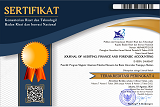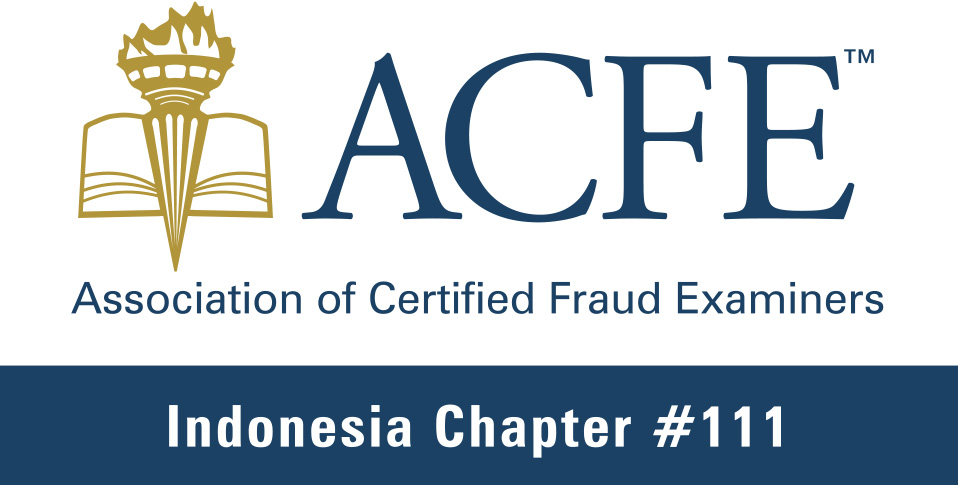RELATIONSHIP BETWEEN CONVERGENT-DIVERGENT THINKING CHARACTERS AND MIND MAP
Abstract
This study aims to evaluate the mind mapping material in creativity course syllabus. The test is performed to see the students' convergent-divergent thinking characters. The treatment of the accounting mind map using numerical symbols was given to students before and after the thinking character tests. The test used paired sample t-test, Wilcoxon, and Chi-Square. The test result proves that there is an increase of students' divergent thinking character after given the material of accounting mind map using numerical symbols compared to before treatment. However, there is no difference of convergent thinking characters in class C before and after treatment.
Keywords
Full Text:
PDFReferences
Aleinikov, G, Andrei 2002, Mega Kreativitas. Penerbit Niagara
Anthony V. D'Antoni, Genevieve Pinto Zipp, Valerie G. Olson and Terrence F. Cahill. 2010. Does The Mind Map Learning Strategy Facilitate Information Retrieval and Critical Thinking in Medical Students? BMC Medical Education., 61-72.
Ausubel, D. 1963. The Psychology of Meaningful Verbal Learning. New York: Grune & Stratton.
Beydarani, Vahideh. 2015. The influence of concept mapping on reading comprehension of Iranian English students employing persuasive and descriptive texts. Journal of Language Teaching and Research., 196-221.
Biniecki, Susan M. Yelich and Conceicao, Simone C.O.. May 2016. Using Concept Maps to Engage Adult Learners in Critical Analysis. Adult Learning, 51-71.
Ghofrani, Mohsen. 2012. Relationship Between Leadership Styles and Personality Traits Of Physical Education Managers of Education in Khorasan Razavi. Advances in Environmental Biology, 1797-2008.
Gregoriades, Andreas, Pampaka, Maria and Michail, Harris. 2009. Assessing Students' Learning in MIS Using Concept Mapping. Journal of Information Systems Education, 419-426.
Gressgard, Leif Jarle. 2012. Text-Based Collaborative Work and Innovation: Effects of Communication Media Affordances on Divergent and Convergent Thinking in Group-Based Problem-Solving. Interdisciplinary Journal of Information, Knowledge and Management.
Huang, Chun-Chieh, Yeh, Ting-Kuang, Li, Tsai-Yen and Chang , Chun-Yen. 2010. The Idea Storming Cube: Evaluating The Effects of Using Game and Computer Agent to Support Divergent Thinking. Educational Technology & Society, 180-201.
Jang, S-J. 2010. The Impact on Incorporating Collaborative Concept Mapping With Coteaching Techniques in Elementary Science Classes. School Science and Mathematics., 86-102.
Leauby, B.A. and Brazina, P. 1998. Concept Mapping: Potential Uses in Accounting Education. Journal of Accounting Education, 123-138.
Liu, M-C and Wang, J-Y. 2010. Investigating Knowledge Integration in Web-Based Thematic Learning Using Concept Mapping Assessment. Educational Technology & Society. 25-37.
Kao, Gloria Yi-Ming, Chen, Kuan-Chieh and Sun, Chuen-Tsai. 2010. Using an E-Learning System With Integrated Concept maps to Improve Conceptual Understanding International Journal of Instructional Media, 151-171.
Ku, David Tawei, Shih, Ju-ling and Hung, Su-Huan. 2014. The Integration of Concept Mapping in A Dynamic Assessment Model For Teaching and Learning Accounting. Educational Technology & Society, 141-154.
Nosratinia, Mania and Kounani, Kolsum. 2016. Comparing The Impact of Divergent and Convergent Tasks on Extrovert and Introvert EFL Learners' Writing Performance. Theory and Practice in Language Studies, 1305-1315.
Novak, J. D. 1999. How do we learn Our Lesson?: Taking Students Through The Process. The Science Teacher, 60 (3), 50-55.
Novak, J.D. 1998. Learning, Creating, and Using Knowledge: Concept Maps as Facilitative Tools in Schools and Corporations, Mahwah, NJ: Lawrence Erlbaum
Nuryana, Ita, Sulistyadi, Kohar and Murtini, Wiedi. 2013. Pengaruh Strategi Pembelajaran Concept Map Terhadap Prestasi Belajar Dasar Akuntansi Keuangan II Berdasarkan Tipologi Belajar. Jurnal Pendidikan Insan Mandiri. Vol.2 No.1. 42-52.
Raval, Vasant and Shimerda, Thomas A. 2002. Integrating AIS Course Content Using Concept Maps. The Review of Business Information Systems, 85-95.
Shimerda, Thomas A,. 2007. Concept Mapping: A Technique to Aid Meaningful Learning in Business and Accounting Education. Indian Journal of Economics and Business, 117-132.
Vink, Sylvia C., Bolk, J and Verloop, N. 2015. Integration of Clinical and Basic Sciences in Concept Maps: A Mixed-Method Study on Teacher Learning. BMC Medical Education., 20-32.
Yang, Che-Ching, Hwang, Gwo-Jen, Hung, Chun-Ming and Tseng, Shian-Shyong, 2013). An Evaluation Of The Learning Effectiveness of Concept Map-Based Science Book Reading Via Mobile Devices. Educational Technology & Society, 167-188.
DOI: https://doi.org/10.21107/jaffa.v5i1.3302
Refbacks
- There are currently no refbacks.
Our Journal indexed by:
Our support tools using:



This work is licensed under a Creative Commons Attribution 4.0 International License.












